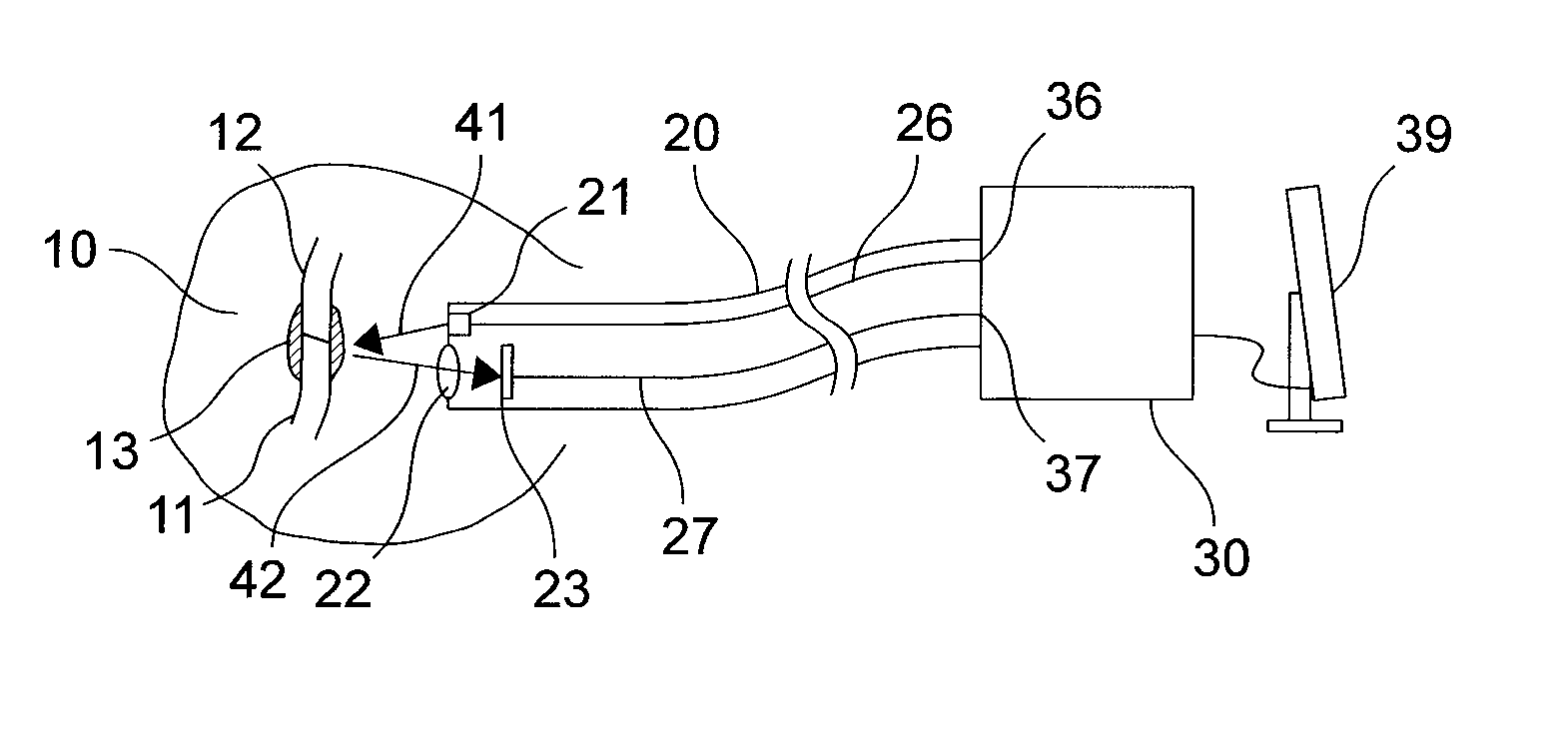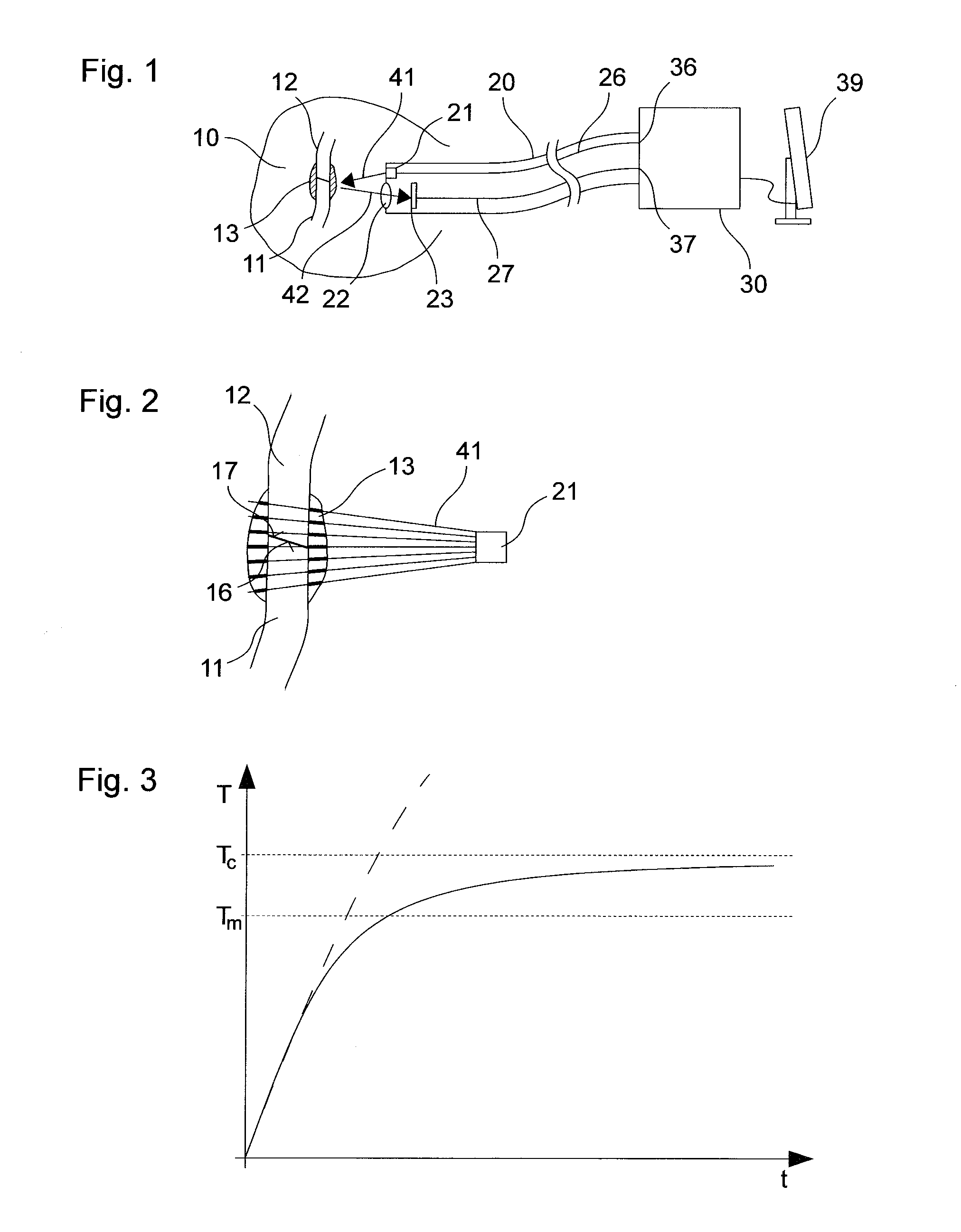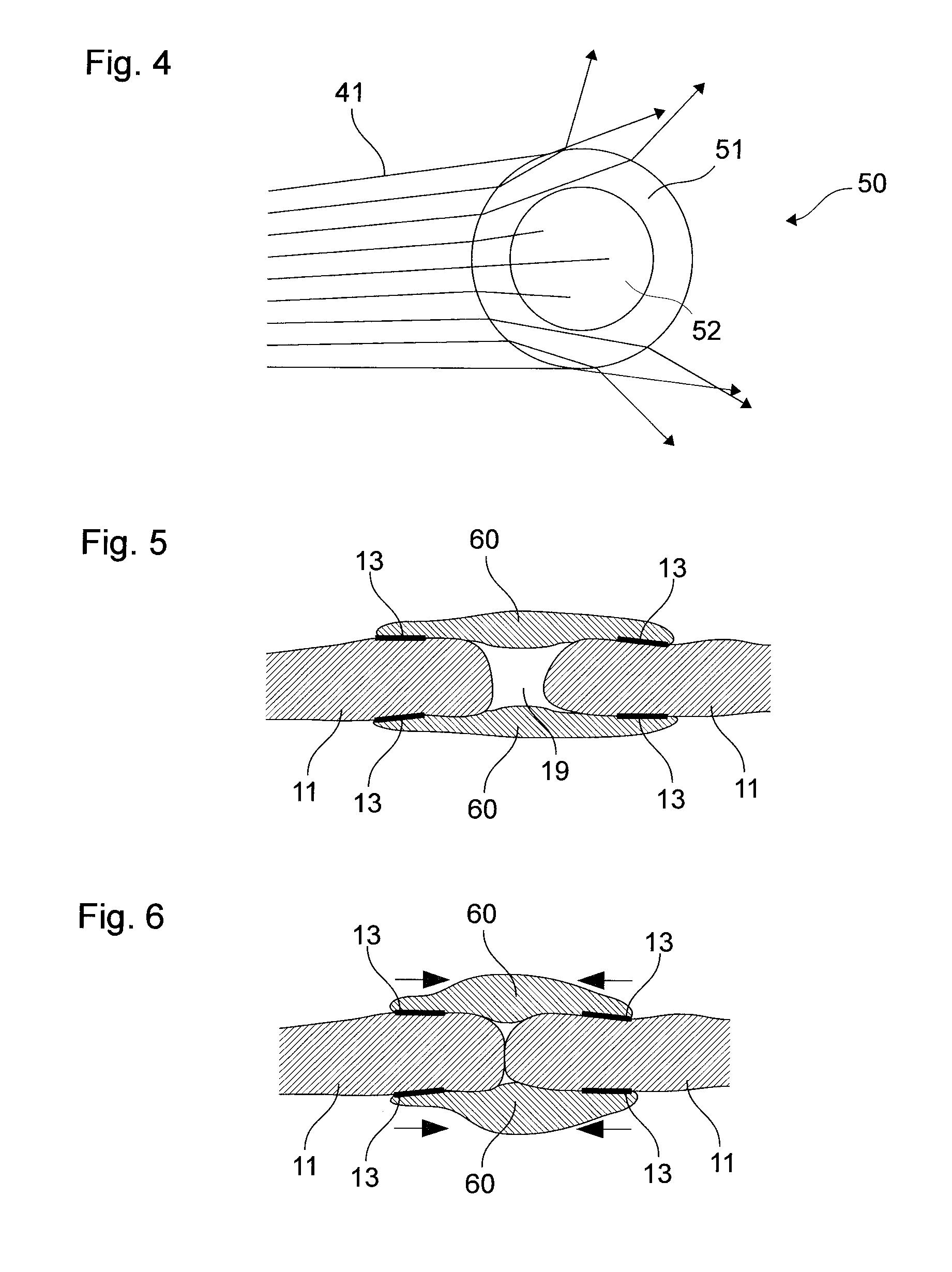Method and solder for form-fitted joining of two surfaces
a technology of form-fitting and solder, which is applied in the direction of soldering media, dental prosthetics, dental preparations, etc., can solve the problem that the melting of solder is often difficult to recognize optically
- Summary
- Abstract
- Description
- Claims
- Application Information
AI Technical Summary
Benefits of technology
Problems solved by technology
Method used
Image
Examples
Embodiment Construction
[0035]FIG. 1 shows a schematic depiction of a cross-section of a device for form-fitted joining of two surfaces, in particular for form-fitted joining of two surfaces in a human or animal body. In a hollow cavity 10 a first part 11 and a second part 12 are to be joined by means of a solder 13. The device includes an endoscope 20 whose distal end can be inserted in the hollow cavity 10. A light source 21, a lens 22, and an image sensor 23 are positioned on the distal end of the endoscope 20. The light source 21 is connected with an illumination line 26. The image sensor 23 is connected with an image line 27. The device further includes a control device 30 with an illumination output 36 that is coupled by the illumination line 26 with the light source 21 and an image signal input 37 that is coupled by the image line 27 with the image sensor 23. The device further includes a user interface 39, for instance a visual display unit and / or a keyboard or other input device, which is coupled ...
PUM
| Property | Measurement | Unit |
|---|---|---|
| temperature | aaaaa | aaaaa |
| temperature | aaaaa | aaaaa |
| optical property | aaaaa | aaaaa |
Abstract
Description
Claims
Application Information
 Login to View More
Login to View More - R&D
- Intellectual Property
- Life Sciences
- Materials
- Tech Scout
- Unparalleled Data Quality
- Higher Quality Content
- 60% Fewer Hallucinations
Browse by: Latest US Patents, China's latest patents, Technical Efficacy Thesaurus, Application Domain, Technology Topic, Popular Technical Reports.
© 2025 PatSnap. All rights reserved.Legal|Privacy policy|Modern Slavery Act Transparency Statement|Sitemap|About US| Contact US: help@patsnap.com



